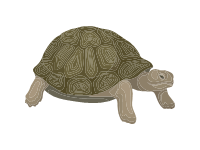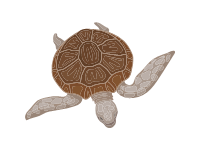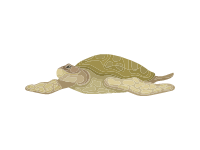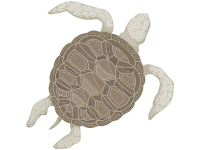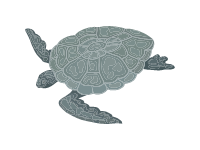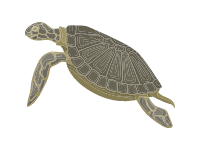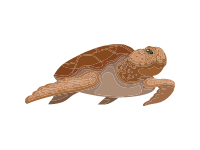The olive ridley turtle is named for the generally greenish color of its skin and shell, or carapace. It is closely related to the Kemp’s ridley, with the primary distinction being that olive ridleys are found only in warmer waters, including the southern Atlantic, Pacific and Indian Oceans. Growing to about 61 cm (2 ft) in carapace length (measured along the curve), the olive ridley sea turtle gets its common name from its olive-colored carapace, which is heart-shaped and rounded. Males and females grow to the same size; however, females have a slightly more rounded carapace as compared to males.The heart-shaped carapace is characterized by four pairs of pore-bearing inframarginal scutes on the bridge, two pairs of prefrontals, and up to nine lateral scutes per side. L. olivacea is unique in that it can have variable and asymmetrical lateral scute counts, ranging from five to nine plates on each side, with six to eight being most commonly observed.Each side of the carapace has 12–14 marginal scutes. The carapace is flattened dorsally and highest anterior to the bridge. it has a medium-sized, broad head that appears triangular from above. The head's concave sides are most obvious on the upper part of the short snout. It has paddle-like fore limbs, each having two anterior claws. The upper parts are grayish green to olive in color, but sometimes appear reddish due to algae growing on the carapace. The bridge and hingeless plastron of an adult varies from greenish white in younger individuals to a creamy yellow in older specimens (maximum age is up to 50 years).
